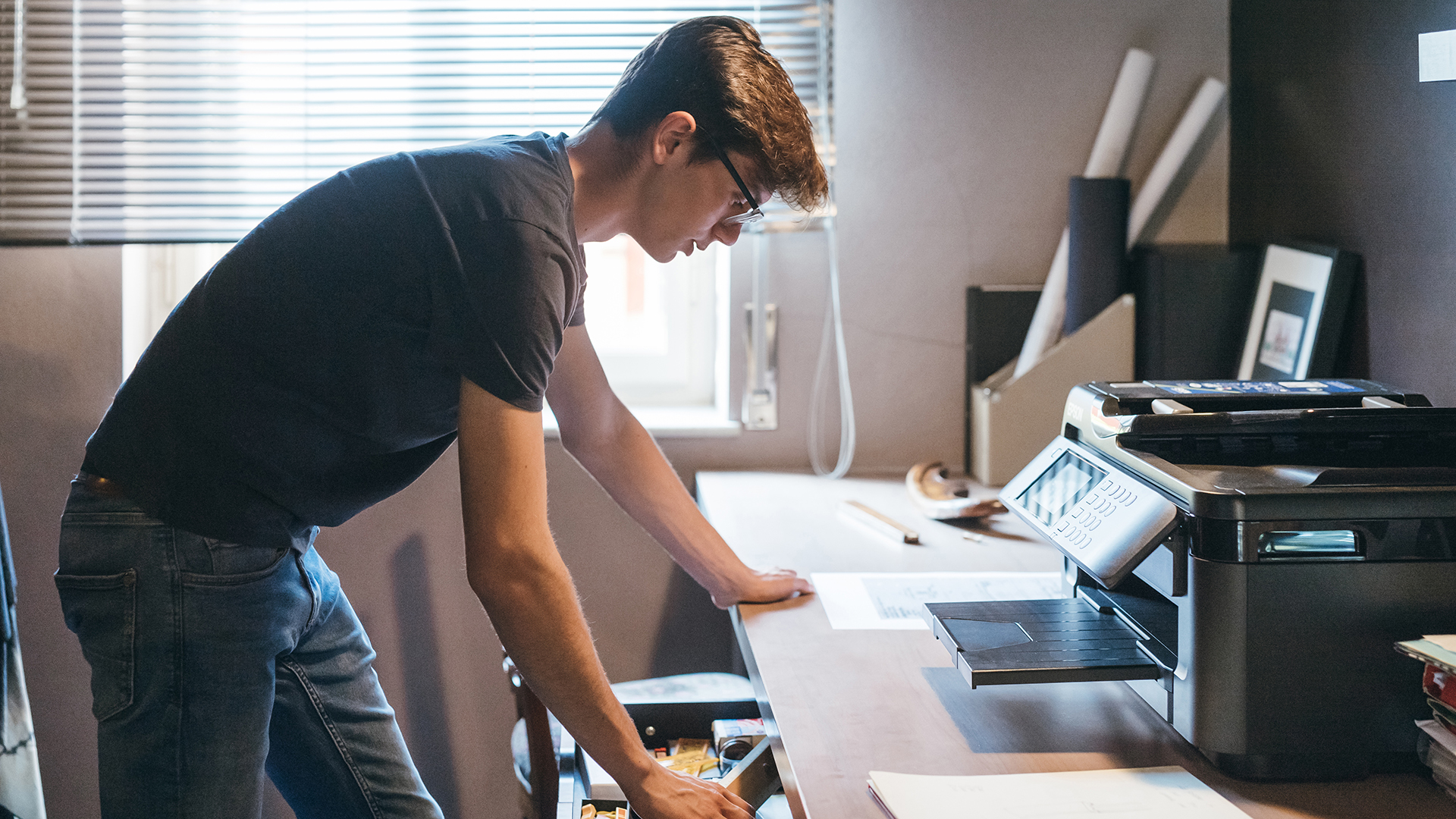How does a laser printer work?
How does a laser printer work? Demystify the printing process to make your home office easy to use.

Whether you're on the hunt for one of the best photo printers, or your office tech has left you curious, you might find yourself asking 'how does a laser printer work?' Printing with lasers may sound like a work of science fiction, but laser printing technology has been around since 1969, when research began by Gary Starkweather at Xerox, leading to the world’s first commercial laser printer - the Xerox 9700 launching in 1977. Since their inception, they’ve become a firm favorite for office environments due to their inherently super crisp text, speed, reliability, and cost efficiency.
Laser printers use toner cylinders, which can be a single black toner roller on entry-level black and white laser printers, while more expensive full color laser models come with additional rollers, usually four in total, for black, cyan, yellow, and magenta colors.
In operation, each Organic Photoconductor (OPC) drum becomes negatively charged by the primary charge roller (PCR). The printer software works out which parts of your sheet of paper need black, cyan, yellow or magenta toner to create the final image and fires a laser onto the relevant part of the drum to give it a positive charge to attract the negatively charged toner onto the drum from the toner hopper.
The laser printing process is highly choreographed and at this point, your sheet of paper passes over the roller which has had the toner transferred to it. After passing through all of the rollers and the final document or image is created by all black, cyan, yellow, and magenta colors, it passes through the melting assembly where it becomes permanently melted into the paper.
Due to the super fine resolution of the laser, this means that you can achieve crisp lines, much sharper than would be possible with even a high-end inkjet printer.
Now you know how they work, let’s take a look at some of the pros and cons to find out if a laser printer is suitable for you…
Advantages of laser printers
Laser printers have become commonplace in many offices because they’re very reliable and cost-efficient. Inkjet models are built completely differently, using print heads that disperse wet ink droplets onto the media and this is why you need to wait a little while for your prints to dry before touching them with inkjet printers, however, prints on laser printers come out fully dry and ready to go.
Sign up to receive the latest news, reviews, buying guides and deals direct to your inbox
Inkjet printers also suffer from clogged print heads if they go long periods without use which can lead to unsightly lines or banding appearing in your prints. There’s a wastage issue associated with inkjet models too as you might be tempted to dispose of a partially used cartridge with a blocked print head to install a new cartridge with a fresh print head. This isn’t an issue with laser printers, and while each toner cartridge is expensive, at roughly £40-60 per toner, they last for incredibly long periods of time and depending on how much toner is used on each page this could be anywhere from a few thousand pages to tens of thousands of pages before your toners need replacing.
Laser printers can work out more cost-effective depending on what you’re printing and how often. If you do get low on toner or see banding you can take the toner cartridge out and gently tilt it from side to side to redistribute the toner and you should be able to extend the life of the toner roll a little after which it’s time to replace it with a new drum. Our Xerox C8130 laser printer also comes with a cleaning rod you can use to clean the colors and fix the banding.
Due to the nature of laser printers, they also deliver extremely crisp and sharp text making them great for office documents and they can print in a fraction of the time of an inkjet model.
Disadvantages of laser printers
So we’ve looked at the advantages of laser printers and now it’s time to consider their drawbacks. Laser printers use large toner cartridges and roller drums compared to a small inkjet cartridge, so laser printers inevitably take up a larger footprint. However, this isn’t usually an issue for the large spacious office environments that they’re well suited for, but could potentially be a deal-breaker for someone looking to get a printer for their home office.
There’s also the cost, though this isn’t straightforward. Inkjet printers are sold very cheaply, for less than it costs to make them in many cases, this is because the manufacturers make their money from the sale of ink cartridges.
However, laser printers are an expensive purchase, to begin with, plus you have the toner cartridges which cost around £40-60 each too, though as stated before they can last a very long time and be more cost-effective than inkjet models.
We spoke to one business owner that chooses to lease his laser printer paying around £200 per month and then on top of that 5p per color print and 0.005p per black and white print. As part of the lease, the company provides all of the toners you need as well as maintenance and keeps you up to date with the newest laser model too, you just provide your own paper. When we spoke to him he’d printed 14,000 pages and his black toner was only at 50%.
Another cost-related downside is they tend to be less power efficient as the laser and heating assembly use more electricity than your average inkjet model. This could be a sticking point given the increased cost of energy in the current cost of living crisis.
One last thing to consider is that if you plan to print on labels you’ll need to get a pack specifically designed to work with laser printers with a thickness of at least 74 gsm to withstand the heat and avoid burning or jamming your printer which could be a costly mistake!
Discover more guides for the home office…
Best home computer
Best photo printers
Best keyboards for home office
Best touch screen monitors
Best smart pens
Dan is Technique Editor on PhotoPlus: The Canon Magazine magazine. With over a decade writing about all things tech he’s written for a variety of publications before joining Future in April 2019 in that time working across Top Ten Reviews, Digital Camera World, PhotoPlus, NPhoto, Digital Camera and Digital Photographer.

